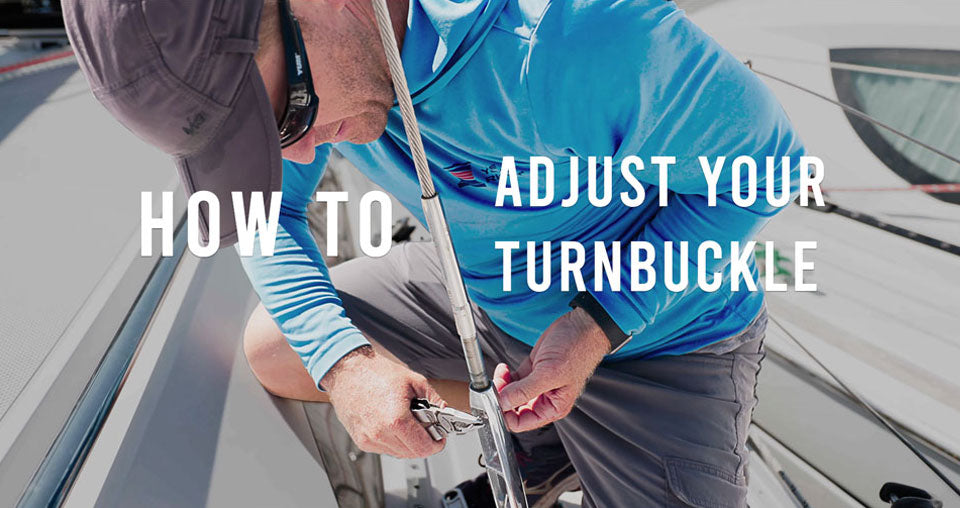Ahoy, fellow cruisers! If you’re eager to keep your boat’s rig in tip-top condition, you’re in for a treat. In this easy-to-follow guide, we’ll delve into the world of turnbuckle adjustments – a vital component of maintaining your vessel’s health and performance. Although we won’t be diving into the intricacies of full rig tuning just yet, mastering turnbuckle adjustments is a fantastic step towards that path. So, get ready to learn the ropes and ensure your sailboat’s rig stays robust and ready for your next adventure.
Before we dive into the nitty-gritty, let’s ensure we’re all on the same page. A turnbuckle is a threaded device that connects various parts of your boat’s rigging system, allowing for tension adjustments. Adjusting turnbuckles is not just about fine-tuning – it’s preventative maintenance that prolongs the life of your rig.
Step 1: Cotter Pin Removal
First things first, it’s time to remove the cotter pins. These small pins secure the turnbuckles in place. Gently unbend the cotter pin’s legs, one at a time, until they’re nearly aligned. Gradually bring them together, taking care not to twist them. The right pair of pliers, preferably with a small nose, will come in handy here. A slight wiggle should align the pins, making them easy to remove. Set these pins aside safely.
Step 2: Adjusting the Turnbuckle
The terminal has flats for gripping with a wrench. Opt for a vice grip-type wrench for a secure hold. Keep the wire steady as you turn the turnbuckle – this prevents wire damage.
Knowing the direction of the threads is crucial. Typically, the upper thread is right-hand, while the lower thread is left-hand. Turn the turnbuckle in the appropriate direction – lefty-loosy for the upper thread. Count your turns. Keep an eye on the thread slopes – the right side of the right-hand thread is higher. After loosening, apply marine-grade grease generously for longevity and smoother adjustments.
Step 3: Retightening and Maintenance
Reverse the turnbuckle to tighten it back up. Counting your turns to reset the tension level. Always secure the wire to prevent any twisting. For turnbuckles with stem ball fittings, make sure they’re secured to avoid rotation. When unsure, avoid backing up the turnbuckle entirely – stick to minor adjustments. Apply fresh grease and tighten every two years for a healthy rig.
And there you have it, cruisers – a quick guide to adjusting turnbuckles on your boat. Remember, mastering this skill is the first step towards a finely-tuned rig. Regular adjustments, grease application, and proper thread handling will keep your rig in ship shape condition.
Products we use in the video:
The sealant we use for everything https://amzn.to/3n0FdRA
Put on every screw and dissimilar metal https://amzn.to/40CdqVp
Lubricate mast car synthetic bearings with https://amzn.to/3Na8kfF
Our favorite masthead light https://amzn.to/3N5nWBj
Alternate masthead light https://amzn.to/3V0fCVn
Wind indicator https://amzn.to/3V1War8
Locking Crescent we love https://amzn.to/3Ao7C76
Lightning dissipater rod https://amzn.to/41Dv9gk
My daily protein https://amzn.to/3oH4NeU





